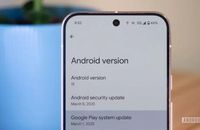In recent years, the reliance on smartphones has become an integral part of daily life, whether for work tasks, storing personal photos and videos, or navigating through various applications. However, with the multitude of available apps, concerns have emerged regarding privacy breaches and cyber fraud. Some applications pose a direct threat to user privacy by secretly recording them and stealing personal data, including messages from platforms like WhatsApp.
To protect your personal data from breaches, cybersecurity experts have issued a warning about twelve applications that should be deleted from mobile devices immediately due to their spying capabilities through the camera and microphone, as well as their ability to steal messages from various applications.
According to TechCrunch, a site specializing in technology and cybersecurity, a group of apps has been found to operate covertly, activating the camera without permission and stealing sensitive messages from WhatsApp and other platforms. Therefore, it is crucial to enable Google Play Protect, which is considered one of the best defenses against harmful apps on Android devices.
Here’s a list of the twelve apps that should be removed immediately to safeguard your privacy:
- ADVERTISING
- Privee Talk
- MeetMe
- Let’s Chat
- Quick Chat
- Rafaqat
- Chit Chat
- YoohooTalk
- TikTalk
- Hello Chat
- Nidus
- GlowChat
If you have any of these applications installed on your phone, it is imperative to remove them immediately. Cybersecurity experts from ESET have revealed that these apps are not merely regular communication tools; they are malicious programs specifically designed to spy on users and steal personal data, such as photos and private messages on apps like WhatsApp and Signal. Furthermore, researchers noted that these applications can record audio and video without the user's knowledge, posing a real threat to privacy and potentially being used for fraudulent or illegal activities.
To protect your device from harmful and spying apps, cybersecurity experts recommend the following precautions:
- Only download apps from official stores like Google Play and the App Store, avoiding installations from unknown sources.
- Read app reviews before installation, ensuring there are no reports of privacy or security issues.
- Avoid free versions of antivirus apps available on untrusted sites, as they may serve as a means to breach your phone.
- Utilize reliable security software like Google Play Protect, which regularly scans apps and detects harmful programs.
- Check app permissions during installation, ensuring they do not require unnecessary access to the camera or microphone without a clear reason.
With the increasing risks of cyber espionage, users must exercise caution when installing apps on their phones. While some may appear innocent, they could actually be sophisticated spying tools. Therefore, if you have downloaded any of the aforementioned apps, you must delete them immediately to protect your personal data from potential breaches.
Meanwhile, another pressing issue for Android users is the hidden updates that can significantly affect device performance and security. Despite receiving reassuring messages that "your system is up to date," many users are unaware that their Android phones may be months behind the latest Google updates.
The article highlights that Google does not clearly notify users about these updates, leading many to delay their installations. For instance, a Nothing phone was found to be running on a September 2024 version while it was already March 2025.
This situation arises from a lack of transparency in the update system, where users are often left in the dark about crucial updates. The updates are not merely cosmetic improvements; they include significant enhancements in privacy, security, and device feature integration.
Before 2019, obtaining new updates for Android phones, especially those not made by Google, was a complex process. Each manufacturer, like Samsung or Xiaomi, had to modify and test the updates before sending them to users, a process that could take months or might not reach lower-end devices at all.
Recognizing the inadequacy of this system, Google launched the Mainline project, aimed at separating core components from the Android system and updating them directly via Google Play, eliminating the need to wait for manufacturers. This initiative has allowed Google to send updates that include features like the Privacy Dashboard in Android 12, device-finding capabilities, and improvements to Play Protect, emergency features, and privacy enhancements.
However, the problem remains that despite the importance of these updates, Google has not made them easily accessible within the system. Users often find themselves navigating through "Settings > Security and Privacy > System and Updates" to locate the "Google Play System Update" option. In some cases, users discover that their last available update was six or seven months ago, as experienced by the article's author.
Another frustrating aspect is that these updates are often available but remain inactive until the user restarts their phone. This can lead to weeks or months of delay, as Android devices no longer require frequent reboots as they once did. Google has made significant efforts to separate, develop, and test these components, yet they fall short in the final step: notifying the user.
Why does Google hide these updates from users? While the primary goal of the Mainline project is to expedite feature delivery to users, the system chosen by Google seems contradictory. Why not send notifications when updates are available? Why conceal the option in a sub-menu under "Privacy and Security"? Why label them as "Google Play updates" when many have little to do with the Play Store or its services?
The result is that users miss out on many new features, believing their phones are "up to date" while the actual system is months behind. As Google promotes Android as an open, modern, and rapidly evolving system, it fails in a crucial yet simple aspect: communicating with users. What is the point of developing new features if they do not reach the intended audience? What value do hidden updates hold if they are activated only after months—or even years—of their release?
Perhaps it is time for Google to rethink how it presents and alerts users about Google Play updates. Until then, we as users must remain vigilant and manually check for these updates because "the system is updated" does not necessarily mean your phone is indeed current.






